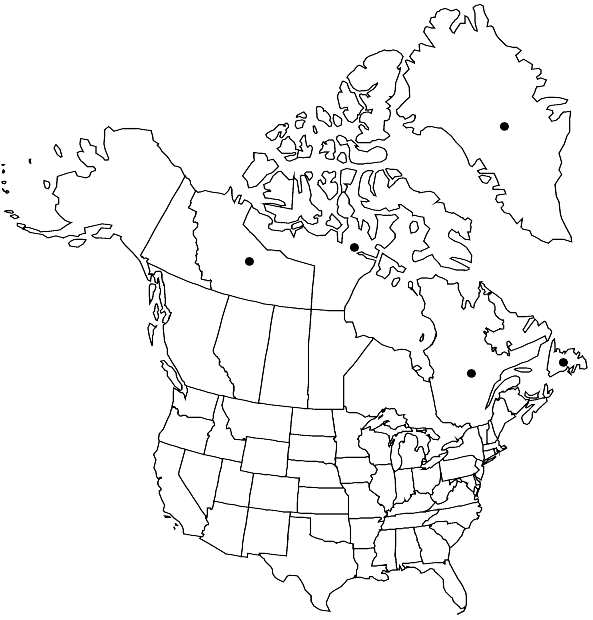Difference between revisions of "Schistidium grandirete"
Bryophyt. Biblioth. 49: 50, fig. 7. 1996,.
FNA>Volume Importer |
FNA>Volume Importer |
(No difference)
| |
Revision as of 21:51, 16 December 2019
Plants in open, occasionally compact tufts, yellow-brown or dull red, often with yellowish or olivaceous tones. Stems 1.2–7 cm, central strand weak or absent. Leaves erect or slightly curved when dry, ovate-lanceolate, occasionally linear-lanceolate, keeled distally, 1.7–2.6 mm, 1-stratose; margins usually recurved to apex, smooth or weakly toothed, 2-stratose or 1-stratose in spots; apices acute; costa percurrent or short-excurrent as a smooth or weakly denticulate, occasionally decurrent awn, abaxial surface sometimes papillose; basal marginal cells short-rectangular or quadrate; distal cells mostly short-rectangular, 11–14 µm wide, strongly sinuose. Sexual condition autoicous. Capsule orange- or red-brown, short-cylindric or cupulate, 0.7–1.1 mm; exothecial cells usually isodiametric, quadrate or irregularly angular, usually mixed with a few elongate cells, thin-walled, trigonous; stomata present or absent; peristome patent to squarrose-recurved, often twisted, 330–530 µm, bright red, papillose, usually strongly perforated. Spores 15–21 µm, granulose or verruculose.
Phenology: Capsules mature late spring to early summer.
Habitat: Rocks and on moist mineral soil
Elevation: low to moderate elevations (0-600 m)
Distribution

Greenland, Nfld. and Labr. (Nfld.), N.W.T., Nunavut, Que., Eurasia.
Discussion
Schistidium grandirete is an arctic species characterized by a distinctive orange-brown or dull red color and large laminal cells. Differences between S. grandirete and the similar arctic species 18. S. holmenianum are discussed thereunder.
Selected References
None.